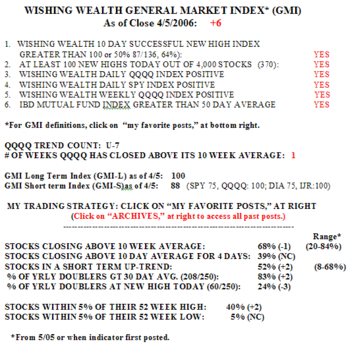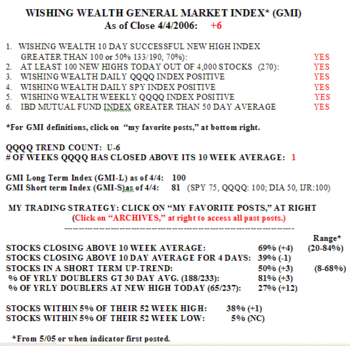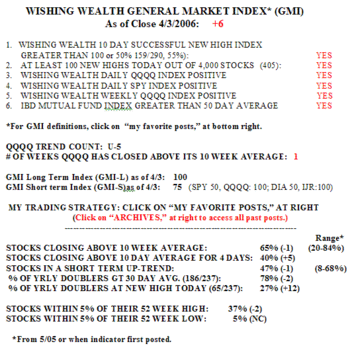The GMI remains at +6, as the Nasdaq 100 stocks begin to take off. The fact that the leaders, GOOG and AAPL, appear to have ended their consolidations is a sign of strength. 
Please send your comments to: silentknight@wishingwealthblog.com.
Stock Market Technical Indicators & Analysis
The GMI remains at +6, as the Nasdaq 100 stocks begin to take off. The fact that the leaders, GOOG and AAPL, appear to have ended their consolidations is a sign of strength. 
Please send your comments to: silentknight@wishingwealthblog.com.
Well, I told you that in the past that when I became so frustrated with my trading that I withdrew from the market, we were generally near a short term bottom in the market. So, thank the "Wish" indicator for detecting the current rally. The GMI remains at a maximum +6, and the GMI-S and GMI-L indicators are also strong. 
I entered the Squawk Box stock trading contest; check it out. Maybe one of us will win a Maserati…….
Please send your comments to: silentknight@wishingwealthblog.com.
The GMI remains at the maximum reading of +6. There were 405 new highs in my universe of 4,000 stocks. But with the sell off late in the session, only 43% of the Nasdaq 100 stocks advanced along with 54% of the S&P 500 stocks and 67% of the Dow 30 stocks. 
Please send your comments to: silentknight@wishingwealthblog.com.